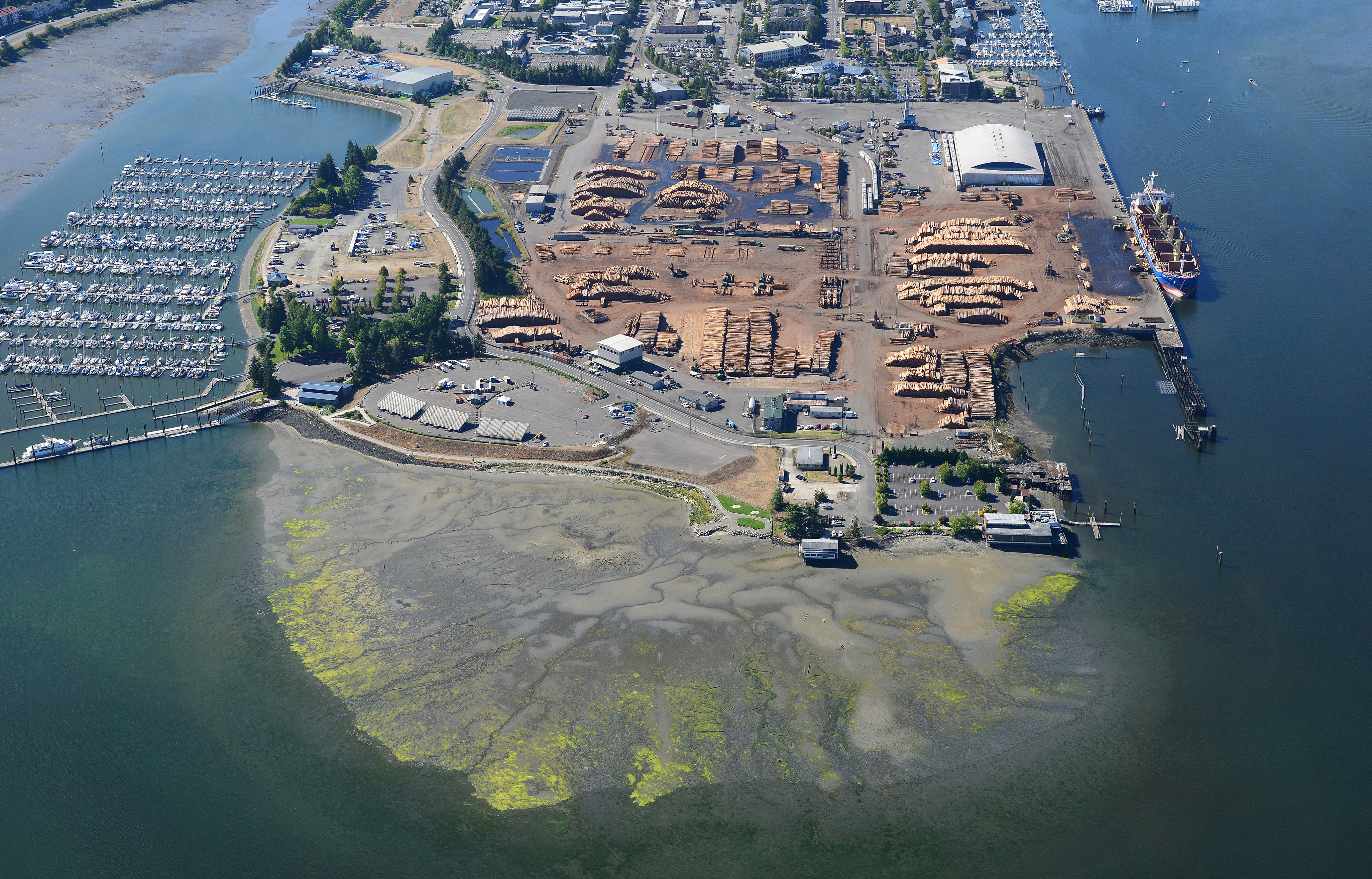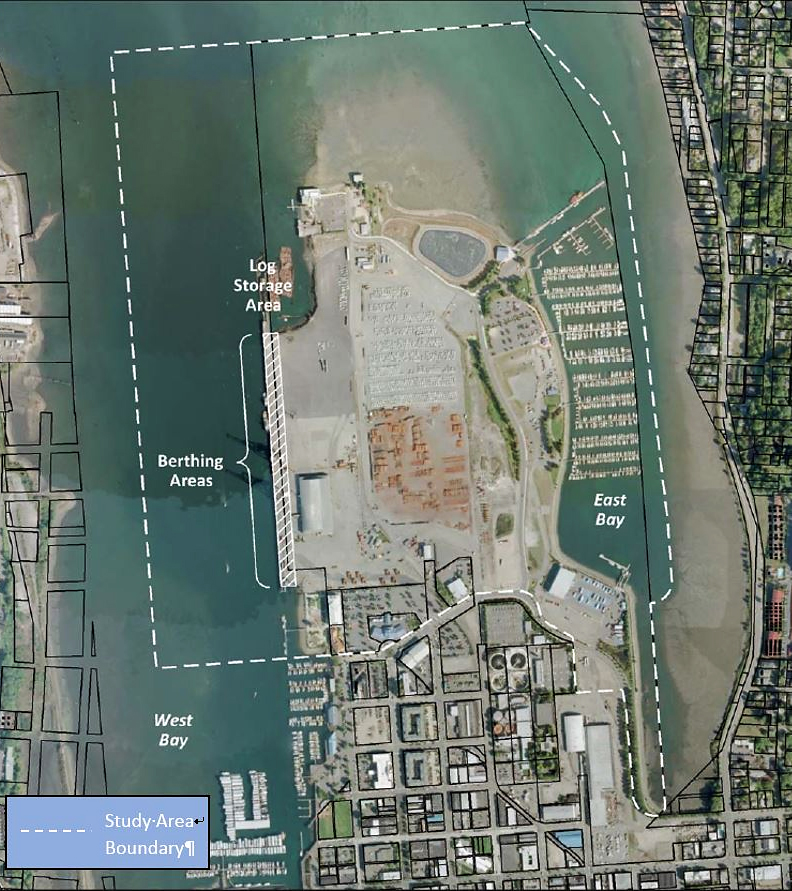
Ecology and the Port of Olympia are amending a legal agreement that requires the port to clean up contamination in sediment — the mud, sand, and silt under the waters of Budd Inlet.
The sediment was likely contaminated by businesses that operated on the Olympia waterfront from the 1920s to 1980s, including sawmills, a plywood manufacturer, and a veneer factory. These kinds of lumber facilities often burned salt-laden wood, which is a source of dioxins. There was also a wood treatment facility on the shore that used pentachlorophenol. Dioxins are also an impurity in pentachlorophenol. The polycyclic aromatic hydrocarbons (PAHs) could have come from many sources, including these lumber industries.
This partial cleanup is focused in the 'study area'; around the port peninsula.
The addition to the legal agreement requires the port to complete an interim action plan. “Interim actions” are cleanup projects that deal with part of the contamination at a site, so that cleanup can start happening before a full cleanup plan is ready. The amendment also requires the port to do environmental studies to fill in gaps in the data so they can plan an effective cleanup, and to design the interim action.
When the draft interim action plan is complete, we’ll share it and provide an opportunity to comment.
How to participate
- Read the amended agreed order
- Read the public participation plan
- Comment online until July 10
For more detailed information, visit our Budd Inlet Sediment cleanup page.
Past work
The port discovered the dioxin contamination in 2007 while planning to dredge shipping berths. Under the original legal agreement with Ecology, the port dredged the berths, safely disposed of the contaminated sediment, and studied how effective the dredging was as a cleanup method.
An Ecology study found both dioxins and PAHs in the southern part of the inlet, but not all areas are equally contaminated. Some parts only have contamination at very low concentrations, below levels that need clean up.
Puget Sound priority bays
Budd Inlet is one of the urban bays Ecology is prioritizing for cleanup. Several other sites along the inlet are in different stages of the cleanup process. These projects have already allowed for new development and public use near the waterfront.


